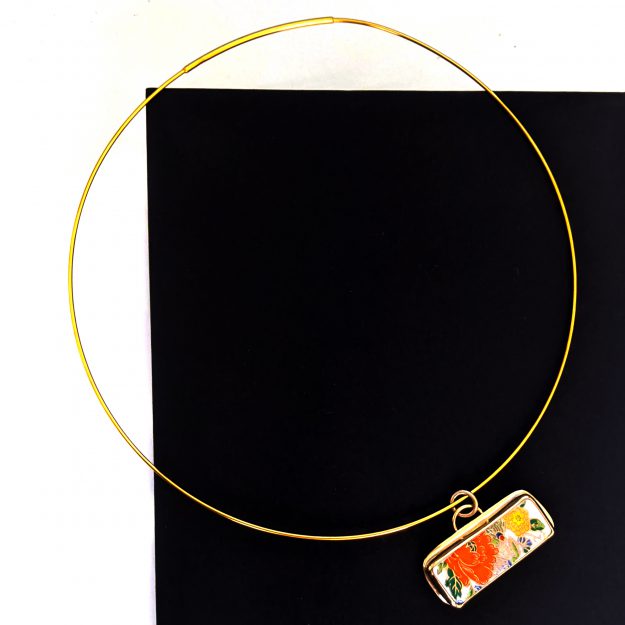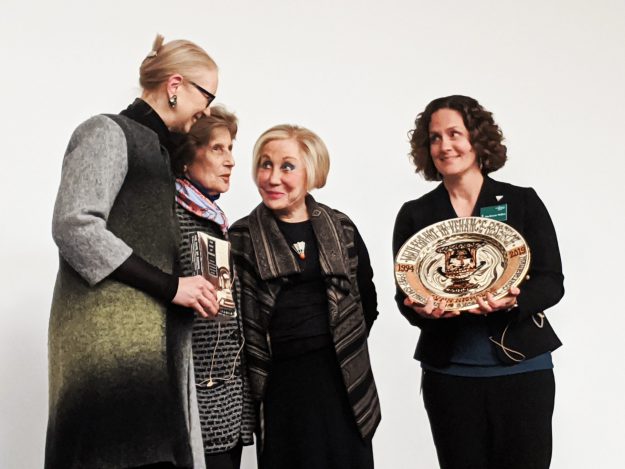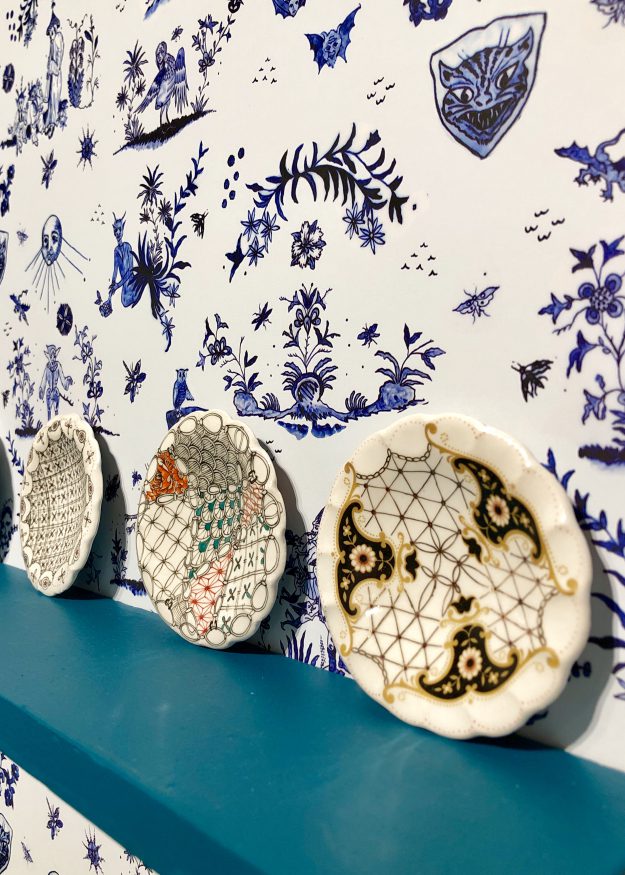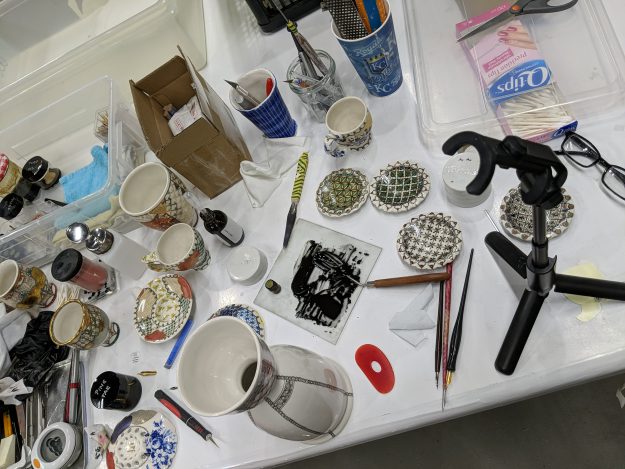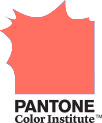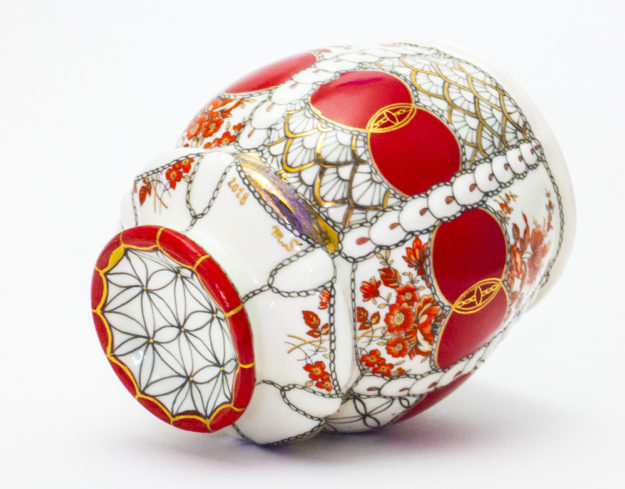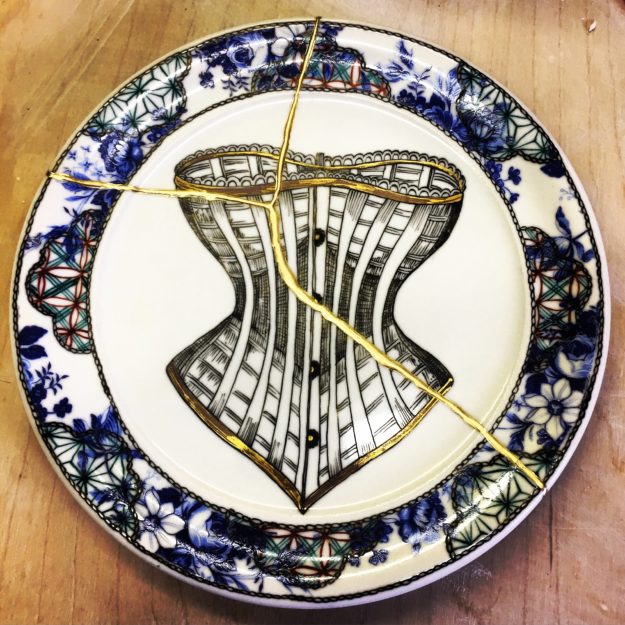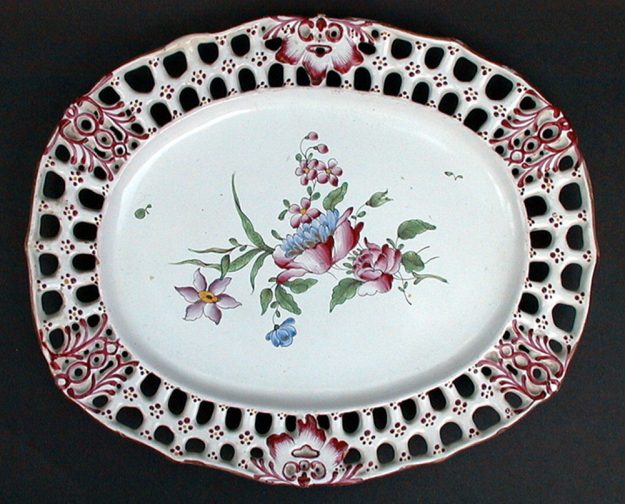Ikebana (生け花, 活け花, “arranging flowers” or “making flowers alive”) is the Japanese art of flower arrangement. It is also known as Kadō (華道, “way of flowers”). The tradition dates back to Heian period, when floral offerings were made at altars. Later, flower arrangements were instead used to adorn the tokonoma (alcove) of a traditional Japanese…
These last couple of weeks have been SUPER special: So honored to work with the one and only Irma Starr on her commemorative platter for Lynn Nichols for her exceptional contributions to the field of World War II-Era Art Provenance Research. Irma Starr is a 17th-century slipware artist, based here in Kansas City. She is…
Dear friend, I’m so excited to be heading back to Anderson Ranch Arts Center, in Snowmass, Colorado, to teach a 1-week workshop on June 08 – 12, 2020 about my favorite subject: China Painting, Luster, and Cold-Finishing Techniques on ceramics. There are still a few spots available and it would amazing if you would join…
Sep 20 to Nov 3, 2019: Northern Clay Center, Main Gallery 2424 Franklin Avenue East, Minneapolis, MN, 55406 | 612.339.8007 | Opening reception: Friday, October 11, 6 – 8 pm Mario Praz, an Italian-born critic, used a Latin phrase, horror vacui, to confront the Victorian fetish of visual clutter. Since that time, more than 100 years have…
This is the wallpaper design, printed on a bunch of printer sheets and spread out on the floor. Can’t wait to see these on a wall!
After a couple of months of wheel throwing and slip casting, I am back behind the wheel. China Painting is almost like riding a bike, but you have to find your way back to it every time you start again. Sometimes the pigments are grainy and don’t mix as well as the last time, the…
ANNOUNCING THE PANTONE COLOR OF THE YEAR 2019: Source: https://www.pantone.com/color-intelligence/color-of-the-year/color-of-the-year-2019
I have been thinking about retiring this cup shape for a while now, but every time I get back to it the decorations get more elaborate and I get more inspired by its form. I adjusted this cup to have a “real” foot and a rim and decided to revamp it again and again and…
My china-painting techniques allow me to paint the bottom of my pieces. I recently figured this out and have been painting avidly. Here are some examples of “feet” or “bottoms”:
Kintsugi (金継ぎ, きんつぎ, “golden joinery”), also known as Kintsukuroi (金繕い, きんつくろい, “golden repair”), is the Japanese art of repairing broken pottery with lacquer dusted or mixed with powdered gold, silver, or platinum, a method similar to the maki-e technique. As a philosophy, it treats breakage and repair as part of the history of an object,…
Porcelain making in Japan began 400 years ago. It is said to have started in 1616 in Arita, a town on the southern island of Kyushu near Nagasaki. One of the most famous of Japanese porcelain styles is Kakiemon.
Hungary has a long tradition of porcelain-making, which flourished during the mid-nineteenth century and continues to present day. Herend Porcelain The Herend Porcelain Manufactory (Hungarian: Herendi Porcelánmanufaktúra Zrt.) specializing in luxury hand painted and gilded porcelain, was founded in 1826 by Vince Stingl with a focus on earthenware pottery making. He went bankrupt later on and…

